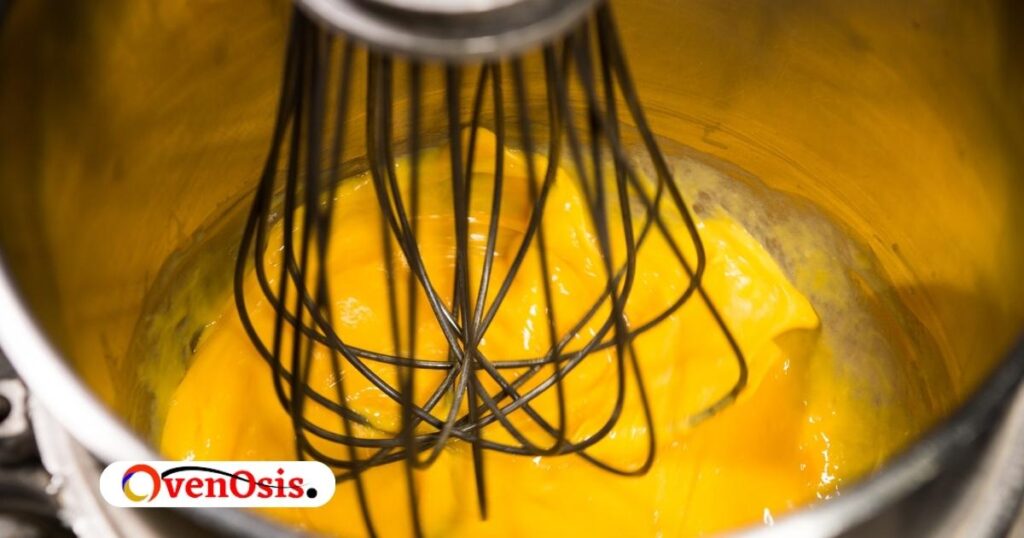Mixing or chopping butter in flour is often done for flaky pastries. Butter must be mixed in small chunks into the dough, but not completely mixed. For example, butter can be rubbed into flour with the fingers and thinned with flour-dusted fingers. The weakness of this approach is that it must be moved quickly to prevent the butter from heating and melting. This is where the Pastry blender comes in. To learn more about this magical kitchen appliance, check out this article.
What is a pastry blender?
A Pastry Blender is sometimes called a Pastry cutter or pastry dough. This stainless-steel hand-held tool was made to mix butter with flour to make a flaky pastry dough with a rich butter flavor. The pastry cutter has a sturdy blade connected with stainless steel strips, wires, or handles.
To use a pastry cutter, press the pastry cutter into a mixture of cold butter and flour. This technique is called rubbing.
The most commonly used pastry cutter has five stainless steel blades. When buying a pastry blender, look for one with comfy, non-slip holds and a sturdy stainless-steel blade.
Benefits of Using a Pastry Blender
There are other ways to use a Pastry blender. However, there are many edges to using this tool for you or your pastry chef:
The work becomes easier to see.
A pastry blender is more convenient than a hand or a food processor. It’s easy to see what you’re doing, so you can see if you’ve got the hardness you need for flour.
In addition, the work is simple, and the time and effort of the chef and the user to clean can be saved. Much of the chef’s work occurs in the Pastry Kitchen, but many need more time to wash or clean various utensils. The Pastry Blender is useful because it does not contaminate your hands while processing the fabric, and if you operate a food processor, you can avoid cleaning additional equipment. Also, using a food processor is convenient because you do not have to wash the tools afterward.
It also makes it better comfortable to work with large quantities of lots.
Heavy lot work can be burdensome manually, especially if other equipment needs to be fixed. The Pastry blender can be more confident and work more efficiently.
It permits you to get rid of the dirt in the dough.
Unlike the hands of an ordinary kitchen robot, the pastry blender is magically dealing with possible lumps and breaking them, preventing any imperfections of the product.
Although the Pastry Blender is definitely useful, it is inevitable that some people need this fabric in their kitchen. This can be an ordinary person who usually doesn’t make sweets and needs to have pies or biscuits when his family or close people come together.
What kind of sweets can I make with a Pastry Blender?
The Pastry Cutter is a great tool for those who want to make the best-baked confectionery because it helps make the dough soft, flake, and break:
Pie crust – Many chefs say combining cold butter, and shortening can make the best pie dough. It makes sense to cut short toning with Pastry Blender because it feels like butter.
Biscuits – When making a biscuit at home, you often mix butter, shorting, lard, and more with your hands, but using a pastry cutter makes it faster, easier, and less dirty.
Crumble Topping – The Dutch apple pie’s crisp head is inexhaustible. Although you can make the crumble topping manually, you can make it faster and more efficiently by mixing butter, flour, and sugar with the Pastry.
How to use Pastry Blender step by step
The Pastry Blender is a basic, easy-to-use design that makes it easy to use:
Step 1.
Cool the butter (and the pastry cutter) – The cold butter is easier to work with, so you should cool it so much before you start. Although not needed, if you refrigerate the Pastry Blender and Mixing Bowl for 30-60 minutes, your butter might cool longer.
Step 2.
Place the flour, sugar, and other ingredients in the recipe in the bowl or in the face where you want to use the Pastry Blender.
Step 3.
Cut the butter – Hold the handle and push the butter in to shake it. Lift it and then push it into another part of the butter. Don’t worry if the dough adheres to the zebra: it will fall while the mixer is on.
Step 4.
Make a piece of butter about the size of a bean – Continue cutting the pieces until they are about the altitude of a bean.
Step 5.
Shave with the paste render – Shave off the dough attached to the edge with a knife when cutting the butter. The extra dough is also cut into the size of the beans with the pastry render.
Step 6.
Proceed according to the recipe: Cut the butter into pieces and make the dough as you would for the recipe.
Conclusion
So, the pastry blender is a versatile tool used in baking to grind fat into flour, creating a crumbly texture for different recipes, such as cakes for pies, biscuits, and buns. It consists of a handle attached to several curved metal blades or wires. By pressing the blade into a mixture of fat and flour, the blender effectively splits the fat, evenly distributing it among dry ingredients. This process helps to create crispy and delicate pastries, preventing rapid fat burning during baking.
To use a blender, put the cold fat (butter, shortening, or fat) in a bowl for mixing with flour and other dry ingredients. Hold the blender behind the handle and press the knives into the mixture, cutting the fat. Shake or rotate, and mix the ingredients until the mixture looks like coarse crumbs. Avoid over-mixing, as this can lead to a tighter texture.


